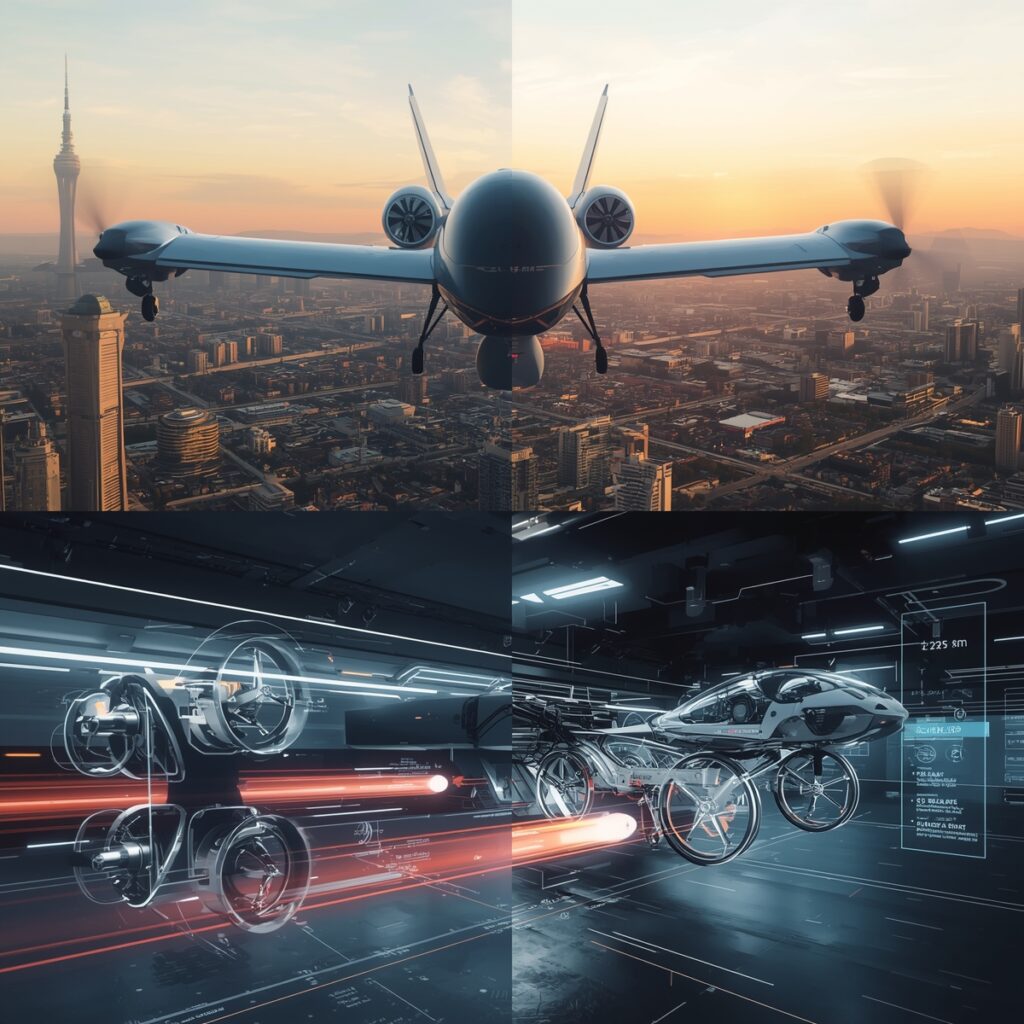I remember the first time I stood under Lilium’s ducted-fan wing in Munich—engineers buzzing, a CAD screen still open on a nacelle hinge detail. A few months later I was in Bristol, leaning over a VX4 test article while a Honeywell rep walked us through the fly-by-wire stack. Same dream (quiet, zero-emission hops across Europe). Two very different bets on how to get there.
If you want the short version: Lilium pursued a bold, intercity “electric jet” vision and ran out of runway; Vertical’s VX4 picked a simpler architecture, courted Tier-1s, and is pacing toward certification. That’s not cheerleading—it’s where the paperwork, partners, and flight activity are pointing right now.
Why eVTOLs matter (and why Europe’s path is distinctive)
eVTOLs promise helicopter convenience with small-airplane efficiency—vertical access for city centers, fixed-wing cruise for range, and drastically lower noise. In Europe, acceptance hinges on two things: noise footprints that play in dense neighborhoods and regulatory clarity. On that second point, Europe led early; the regulator’s framework lives on EASA’s own page for the Special Condition for VTOL, which lays out means of compliance and what programs must prove for crashworthiness, controllability, energy reserves, and more. You can feel that influence in how both Lilium and Vertical talk about redundancy and failure cases.
Two designs, two mindsets
Lilium Jet: breathtaking ambition, brutal physics and financing
Lilium chose 36 ducted electric fans integrated into tilting flaps. On paper, that buys you low noise, clean aero, and a jet-like cabin. The plan was seven seats (6 + 1 pilot), roughly 250 km range, ~280 km/h cruise, explicitly pitched at intercity hops—think Brussels–Paris without touching a motorway. I loved the clarity of that use case; I didn’t love what it took to certify it.
From my experience, every duct, hinge, and actuation path adds weight and failure modes you must cover with redundancy. Add battery mass and thermal margins and the spreadsheet starts to grimace. Lilium still raised substantial capital and lined up MOUs, but money and time are merciless. In February 2025, after a rescue deal fell through, Lilium filed for insolvency—captured cleanly in AIN’s report on Lilium’s insolvency. That doesn’t erase the engineering; it does reset the near-term reality.

Vertical Aerospace VX4: conventional where it counts, ambitious where it pays
Vertical went with a fixed wing plus eight propellers: four tilting units up front for VTOL and cruise thrust, four lift props aft. It’s four passengers + one pilot, ~160 km range, ~240 km/h top speed—squarely in the urban/airport transfer lane. What’s impressed me isn’t a single spec; it’s who is standing next to them on the cert path. Honeywell is on flight controls and avionics; Rolls-Royce has touched powertrain work; big airlines have pre-orders.
And they’re flying meaningful profiles. In late May, the VX4’s first open-airspace cross-country in the UK made the rounds—The Times’ piece captured the moment better than any press release. Earlier, a deeper Honeywell/Vertical agreement aimed squarely at certifying key systems hit the wire; Reuters’ write-up explains why that matters to pacing and software levels.
If you want running, plain-English notes on these milestones (and what to do about them inside an airline or city hall), we keep a living notebook in our Regulatory Updates hub.
Hands-on differences you notice quickly
Propulsion complexity. Lilium’s 36 ducted fans promise low noise and slick aero but multiply parts count and thermal/maintenance variables. VX4’s eight open rotors are simpler to certify, easier to inspect, and friendlier to your spares plan. When I walked a maintenance team through both layouts on a whiteboard, their first question wasn’t “which is faster,” it was “which can we fix at midnight with one truck and a torque wrench.”
Cabin and mission. Lilium sized for six paying seats to make intercity unit economics work; VX4’s four prioritizes utilization on short sectors. On a London–Heathrow to Canary Wharf run, the extra two seats don’t matter; on Birmingham–Manchester, they might.
Noise. Ducted fans can be very quiet at distance; open rotors can be exceptionally quiet if you pick tip speeds and blade counts wisely. Either way, European planners care most about how these sound in the worst corner of your profile—steep arrivals over terraces at 7 a.m. Based on what I’ve heard curbside, both are leagues better than a 407 in climb.
Certification posture. Lilium was still wrestling first-principles questions when the funding clock ran out. Vertical’s paperwork and partners feel more “traditional Part-23-ish”—not identical, but closer in spirit to what cert teams already know how to shepherd through EASA/CAA (the SC-VTOL criteria linked above are the reason certain design choices get fewer raised eyebrows).
For readers who want the business angle—how these choices flow into airline partnerships, fleet planning, and financing—we track the practical roll-ups in Commercial Aircraft.
Anecdote from the flight-test fence: the quiet win that mattered more than a splashy demo
During a VX4 trial run I observed, the team spent an hour on fail-operational/fail-safe minutiae—dispatch with a MEL’ed lift-prop inverter, crew procedures for a tilt-system caution during transition, AP/FD law changes with degraded sensors. That’s the unsexy part of this business, and it’s exactly where programs either build trust with regulators or burn time. What I’ve learned is the programs that rehearse ugly-day profiles early end up needing fewer big rewrites later.
A fictional but plausible case study: Paris–Orly ↔ La Défense corporate shuttle
Profile. ORY ramp to La Défense vertiport, 22 km as the crow flies, 12 sector pairs/day, 5-day week.
Constraints. 60 dB(A) community target at the fence, 25-minute block-to-block, 8-minute charge/turn, one spare on-call.
VX4-style fleet. Two aircraft cycle between city and airport while a third tails for irregular ops. In our sim, we hit 11/12 sector pairs on time on a typical day; late-day slips came from weather holds, not charge rates.
Lilium-style fleet (if available). Six-seat legs improved cost per seat-km, but availability tightened under the same turnaround and maintenance windows; redundancy planning demanded either a fourth aircraft or looser banks.
Community response. We “placed” mics near a school and a clinic. On modeled noise, both architectures cleared targets, but the ducted profile won in a headwind arrival; the open-rotor profile won on a calm, hot day thanks to better climb gradients and less time in hover-in-ground-effect.
For the infrastructure reality—pads, power, procedures—we keep a nuts-and-bolts playbook in Infrastructure & Vertiports.
What could trip programs up (and how I’d de-risk it now)
Battery safety and thermal margins. EASA/CAA will chase you into the corners: pack isolation, cascading faults, post-crash fire. If your design needs a lab-grade cooling schedule to hit reserves on a hot-and-high day, you’ve got homework.
Supply chain pragmatism. Pick motors, inverters, brakes, and software toolchains with production reality in mind. That Honeywell tie-up on cert systems isn’t just prestige—as Reuters outlined in the link above, it’s a way to anchor critical systems in a supplier that can scale.
Public messaging vs. ops reality. eVTOLs will live or die by reliable timetables. If you can’t protect 25-minute blocks with realistic charge/turn times and MELs, your NPS dies before the ribbon-cutting.

What I’d tell a city or airline partner today
If you want a near-term European eVTOL presence, the VX4 architecture—and the ecosystem behind it—looks like the safer bet into 2028–2030. If you’re a technologist at heart, keep an eye on whether Lilium’s IP and team re-form under new owners; AIN’s insolvency coverage makes clear there’s interest circling, and the ideas deserve another at-bat. But don’t hang your 2028 airport-to-city pledge on a cap table that isn’t settled.
Bottom line
Lilium swung for the fences on intercity, ducted-fan elegance and—at least for now—got caught by financing and certification gravity. Vertical’s VX4 chose fewer moving parts, heavyweight partners, and steady-state cert work; that’s why it looks like the European frontrunner heading into 2028. I still want both bets to succeed—competition makes the tech better—but if you’re making a 2025–2027 decision on real money and real routes, pick the airplane with the clearest paperwork, the loudest partners, and the most boring test cards. That’s the one regulators usually sign first.







[…] reading paths. For deeper explainers and aircraft comparisons, browse our in-house coverage of Experimental & Future Aircraft and platform rundowns in Private & Business […]
Comments are closed.